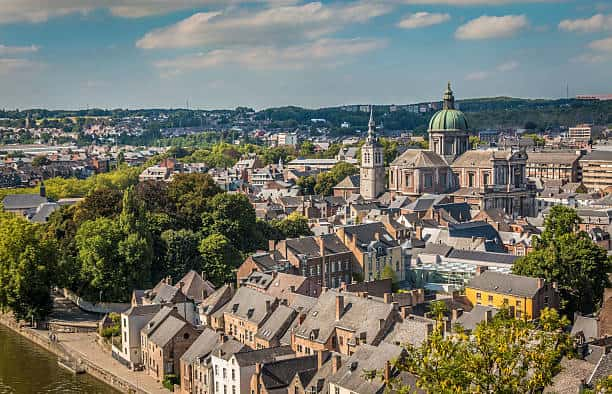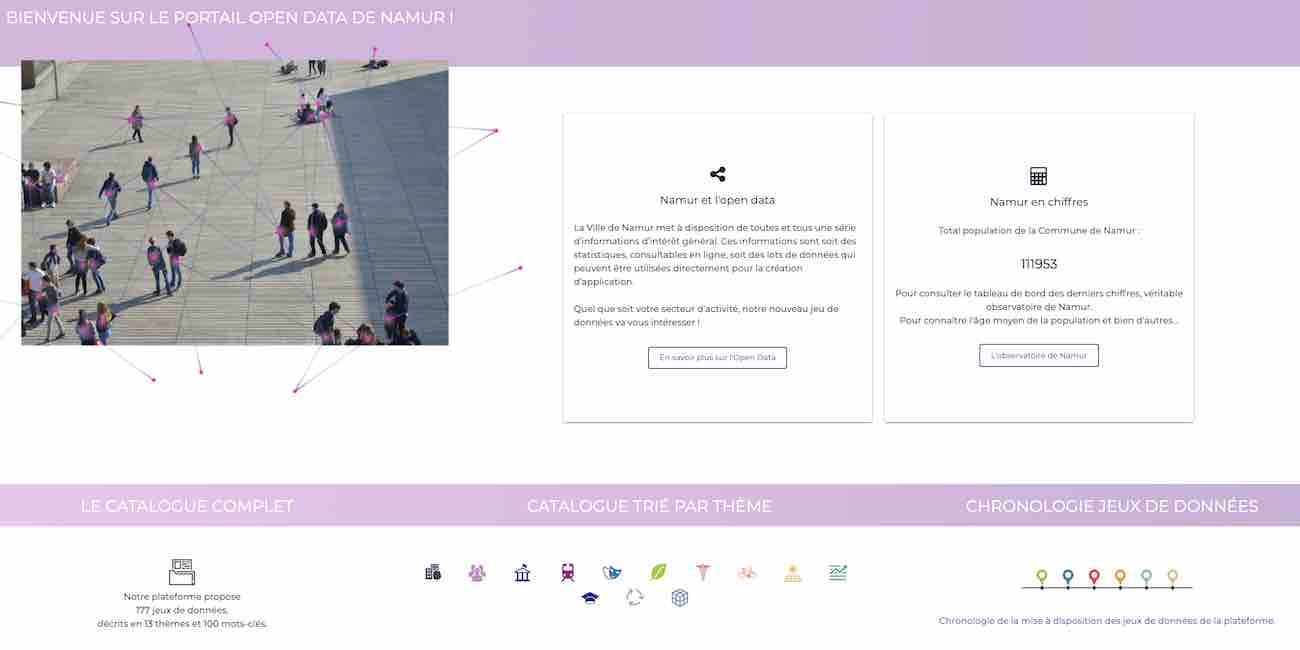How Namur is Advancing Transparency and Engagement with Open Data

The city of Namur is the latest public sector actor in the region to take a leap forward and develop its own ambitious project. The city is working towards delivering a portal that will promote innovation and increase transparency.
Open data in the Wallonia Region of Belgium is not as recent a trend as it may seem. There are a handful of open data projects in the region such as Digital Wallonia’s open data portal, the Bureau économique de la province de Namur (BEP) and the city of Liège. The city of Namur is the latest public sector actor in the region to take a leap forward and develop its own ambitious project. The city is working towards delivering a portal that will promote innovation and increase transparency.
For the past 30 years, Namur’s support services department, in charge of many city services such as information systems, has been leading a cartography project used by both citizens and others government departments. Members of this department have thus been aware for a long time of the need for a service to bring together all data into one location. Before launching its open data portal, Namur had already began sharing public information via a cartography site.
On this site, residents could find information, including geographical data, city maps, corporation filings, neighborhood statistics, and road work updates. Members of the service therefore recognize the importance of centralizing the community’s administrative data.
However, as Samuel Nottebaert, Head of Data and Geographical Services for the city of Namur stated, “we decided we needed to go further and provide additional resources to the community. As a great deal of public information doesn’t come in geographical formats, an open data portal was the right option for us to better share information on demographics, statistics, and budget information, for example.”
The new data portal was also meant to serve as a means to create a more transparent city. It would also allow the city as well as external users to more easily share these data and communicate them by embedding graphs or other charts generated from the raw data into third party websites, such as newspaper articles or other web pages.
However, increasing the city’s transparency was not Namur’s only goal: in addition, it wanted to engage the community to foster reuse of its data in a collaborative manner. While its portal has only been open since June, the city is already using it to accompany local university students in a data science program.
In December, students at the University of Namur will submit their projects in which they were challenged to develop a tool using open data in Namur or other cities on a theme of their choice, such as mobility. These results will hopefully lead to further uses later on of the data platform. While this is taking place, the data is already helping architects and urbanists work on developing their future urban development projects. The data certainly have a wide potential of uses.
Problem-Solving with Data
As Namur’s data initiative grows and matures, it is looking to use its data to help find solutions to certain challenges. As soon as it launched its portal, it began thinking about how data could be used to solve mobility challenges and reinforce the city’s positioning as a smart city. To this end, it is currently working on developing an intelligent transportation system. This consists of collecting in one unique location all datasets related to mobility that any department in the city may produce.
In order to gather these data, the department has had to assemble a diversity of actors including the police, the public service of Wallonia, the Wallon agency of Air and of the Climate, actors from the European Union, and Sofico to gather and aggregate their data and statistics to elaborate new strategies. The aim is to publish a maximum number of real-time mobility-themed datasets as possible in order to use the intelligent transport system to influence mobility behavior. Namur is aiming to launch this project officially in September 2019, with more concrete objectives to be developed as the project grows.
Indeed, it will also be combining these datasets with data coming from a third-party service using sensors to collect traffic information from newly installed traffic cameras, as part of the Intelligent Transportation Project. In order to make this project more feasible, it is working on implementing a system for automated data collection internally to connect to the OpenDataSoft platform. This attests to the strength of the organization in place internally to carry through this data project.
Publishing a Wide Diversity of High-Interest Data
Namur is currently carrying out a great deal of projects that show signs of a mature data program. Its open data manager, Samuel Nottebaert, has been working on evangelizing the different departments of the city since the initiative’s launch. He has spent time talking to other departments about the portal and the city’s goal to motivate them to implement their own processes to share data on the portal in one centralized location. He has brought together members of the cartography department, statistics and demography departments, mobility departments, and even more. Thanks to his work and the city’s ambitious vision, it has emerged as a leader in Wallonia for the strength of its project.

One sign of the advanced nature of the portal is the diversity of datasets, such as the 3D buildings dataset, the Urban Atlas, and the Events Agenda, already available on the portal thanks to this evangelization. It has also taken the initiative to publish data on average thermography of buildings in the city, which serve as a good indicator of the building’s insulation. Indeed, while other cities have decided against publishing such data, Namur has demonstrated it has more positive uses than potential negatives, and has thus made them available.
For example, the data is already being used by the group Renov Energie, an initiative that helps individuals and businesses renovate their homes and buildings to gain in energy efficiency to help in the fight against climate change. The availability of these data was instrumental in making this project possible.
In addition, Namur has made data on the potential of solar energy on rooftops in the city available. “We have found that the data generating the most interest includes energy-related data, 3D data, and mobility data,” indicated Samuel Nottebaert. As such, these data have the highest chances of being reused later on.
It has also made an effort to make datasets as clear as possible from the moment they are published. Rather than using the standard information tab containing metadata, the city presents its datasets through Opendatasoft’s custom view tab. This feature allows them to customize the description they provide of the dataset, going beyond typical metadata and descriptions. For example, they can even add pictures to the datasets to explain their purpose and source. In this way, they are actively working to make each dataset that much more accessible to all users, not just those with advanced technical skills.
Such processes require a strong organization behind the portal. In such a short amount of time, Namur has been able to put together an advanced project and is building the foundations for a productive portal to go well into the future. For now, Namur’s open data project is still in its early phases.
Nevertheless, thanks to the city’s dedication to this project, it has succeeded in creating the right organization to drive it forward. Looking into the future, its projects are ambitious but promise to bring the city innumerable benefits in terms of mobility, energy efficiency, and increased attractivity by being an advanced, and smart city in every sense of the term.
 Data Trends
Data Trends
How successful are governments at sharing their data with citizens and businesses? The latest Open Data Maturity report provides an overview of progress across Europe, and highlights the importance of improving data portals and measuring impact to future success

Data drives effective, well-functioning smart cities and helps build local ecosystems that bring together all stakeholders to meet the needs of the entire community. However, sharing data between stakeholders can be difficult - based on recent Gartner research we explain how urban data exchanges transform smart city data sharing.

